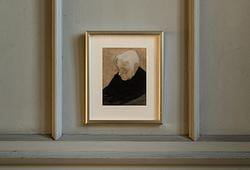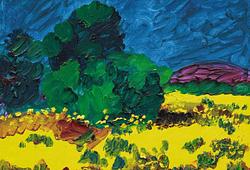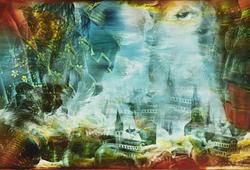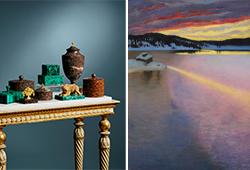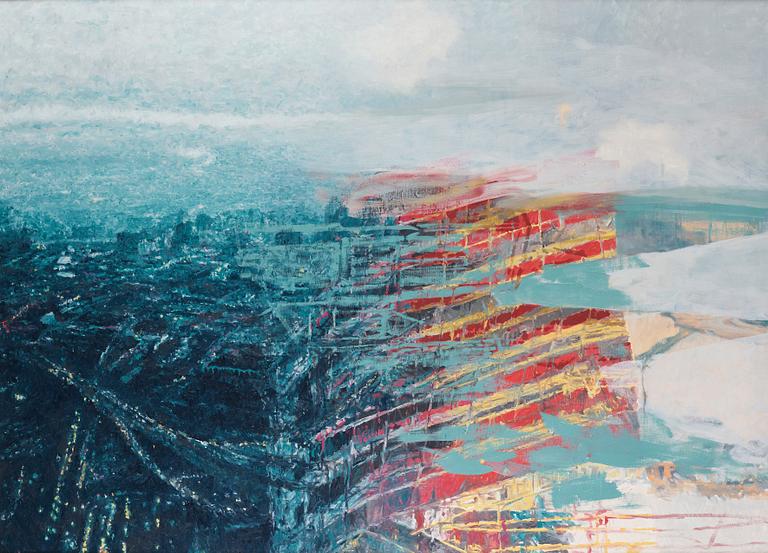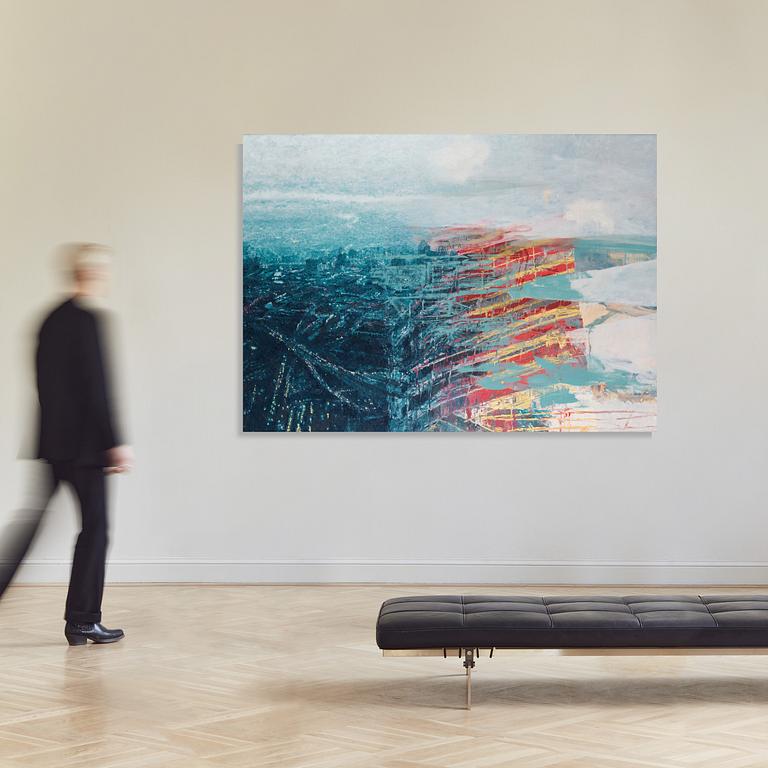Ola Billgren
"Terrain Vague"
Signed Ola Billgren and dated 1987 verso. Canvas 190 x 265 cm.
Import VAT
Import VAT (12%) will be charged on the hammer price on this lot. For further details please contact customer service +46 8-614 08 00.
Provenance
Acquired at Art Cologne, Galleri Engström, Stockholm, 1987.
Private Collection, Germany.
Bukowski Auktioner, Moderna Vårauktionen 2005, lot 543.
Private Collection.
Bukowski Auktioner, Vårens Contemporary 2012, lot 461.
Private Collection.
Exhibitions
Rooseum, Malmö, "Ola Billgren - a retrospective", 14 May - 4 August 1991.
Moderna Museet, Stockholm, "Ola Billgren - a retrospective", 26 October - 8 December 1991.
Kunstforeningen, Köpenhamn, "Mörkrets lys, Nordisk kunst genom 100 år", 1996.
Literature
Ola Billgren, "Album, Ola Billgren - en retrospektiv, Vol.1", 1991, illustrated p. 111.
Hans Johansson, "Svensk Nutidskonst 3 - Ola Billgren", 1993, illustrated fullpage pl. 26.
"Mörkrets lys, Nordisk kunst genom 100 år" Kunstforeningen, Köpenhamn, 1996, illustrated p. 29.
Douglas Feuk and Anne Ring Petersen, "Ola Billgren -Måleri", 2000, illustrated full-page p. 52-53.
More information
During the 1980s, Ola Billgren's artistic focus centred on romanticism and its emotional core. However, the prevailing tendency has been to examine and deconstruct the approach of romanticism rather than its emotional timbre. A recurrent theme was the depiction of the landscape, albeit not in the conventional sense of the term. Billgren's landscapes were composed of photographic collages that complicated the experiential aspect of the landscape. In the form of large panoramic paintings, the artist's focus was not primarily on the natural landscape, but rather on the urban landscape, subjecting it to meticulous scrutiny.
Billgren's 1987 painting Terrain Vague is evidently a signature painting, as it is representative of the artist's work during the late 1980s. As is the case with numerous paintings from the same period, it provides a perspective from a considerable height. In contrast to "Utsikt från en katedral I" (1987) and "Utsikt från en katedral II" (1988), which offer a static vantage point akin to that of a church tower, this work provides a dynamic perspective. In this instance, the vantage point is mobile and easily identifiable as an aircraft. The constant movement of the aeroplane offers a unique vantage point from which to observe the expanse of the metropolis, its intricate network of intersecting transportation routes and diverse architectural landscapes. The metropolis extends indefinitely, defying facile characterisation. It is hypothesised that this spatial disorientation is the origin of the painting's title, Terrain Vague, which is derived from the French term for an area that lacks distinct identity. The area under discussion is located at the intersection of urban and rural zones. This liminal state can be conceptualised as a condition that is neither fully one thing nor fully another. In a seminal essay dating from 1995, esteemed architecture theorist Ignasi de Solà-Morales posits the notion that comprehending an urban landscape in its entirety necessitates the utilisation of photographic documentation. However, it is not the city itself that is the subject of observation, but rather its representation. Through this representation, we are able to form an impression of the city's topography. In a figurative sense, terrain vague can also be perceived as a transitional phenomenon between a physical and a mental landscape, or, in other words, a kind of middle ground between wakefulness and sleep. To elaborate, this phenomenon may be described as the sensation that frequently manifests itself during the ascent or descent of an aircraft between two specified locations. This condition is characterised by a sense of disorientation regarding one's place in the world, accompanied by a persistent emotional awareness that could be conceptualised as a form of psychological anchoring to one's environment.
This is an excerpt from a longer text by Bo Nilsson, which was written in 2012 for the work Terrain Vague.
Artist
Ola Billgren was born in 1940 in Copenhagen but based his career in Sweden. Billgren was self-taught, having only been trained by his parents Hans and Grete Billgren. Ola worked within the mediums of graphic art, watercolour, collage, photography, film, and scenography. He was also an author and culture critic. Known for his versatility, Billgren cultivated a relationship between art and reality in his work.
During the 1960s, he transitioned from abstract expressionism to photographic realism. Over time, his paintings evolved into a fusion of abstract and photorealistic styles, resulting in romantic landscapes where he examined the interplay of light and color. Forms dissolved, and colors were reduced to monochrome, single-colored surfaces that were richly worked and varied.
In the late 1980s, he returned to urban environments in large cityscapes, often painted from a high perspective but maintaining the impressionistic approach seen in his landscapes. Ola Billgren's influence on recent decades of art has been significant. His work is represented in institutions such as Musée National d'art Moderne Centre George Pompidou in Paris and Moderna Museet in Stockholm.




